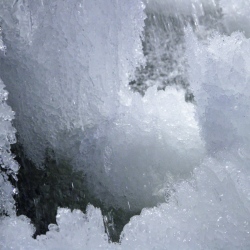
The "End of the World" in the Sleeping Land: that’s what people have called the Yamal Peninsula, a relatively desolate region of Siberia. This region has gained a lot of fame recently as the home of massive and semi-mysterious holes in the ground. Researchers are finding that more and more harmful methane gas is escaping from the thawing permafrost.
That’s at least according to a pair of studies recently published in the Journal of Geophysical Research and Geophysical Research Letters, which look into the extent of permafrost on the Siberian coastal floor and how it is connected to the significant release of the greenhouse gas methane – a gas that is capable of trapping heat in our atmospheres with 20 times the efficiency of carbon dioxide.
Siberia is commonly referred to as the "Sleeping Land" because it’s rather still, with its soil locked up in permafrost that, as the name implies, is not likely to melt. "Terrestrial Arctic is always frozen, average ground temperatures are low in Siberia which maintains permafrost down to 600-800 meters ground depth. But the ocean is another matter. Bottom water temperature is usually close to or above zero," Alexey Portnov, from The Arctic University of Norway, explained in a statement via the Center for Arctic Gas Hydrate, Climate and Environment.
"Theoretically, therefore, we could never have thick permafrost under the sea. However," he added, "20,000 years ago, during the last glacial maximum, the sea level dropped to minus 120 meters. It means that today´s shallow shelf area was land. It was Siberia. And Siberia was frozen. The permafrost on the ocean floor today was established in that period."
Now, especially with changing trade winds, currents, and warming waters, that submerged permafrost is melting faster and faster. And while the consequential release of methane may help promote climate change, the expert is quick to add that this wasn’t caused by mankind’s meddling with nature.
